
International students can bring a lot to a country. They can help to increase the pool of skilled labour available, create jobs, and contribute to a more diverse and multifaceted knowledge culture, not to mention the millions of dollars they bring in to the economy each year.
More and more, governments and other state bodies around the world are beginning to recognize these benefits, and working to devise ways to increase their share of the growing international student market. Increasingly, these efforts are taking the form of overarching national and regional strategies, which focus on investing in marketing efforts, developing policies, and fostering partnerships designed to facilitate international student mobility.
But what do these strategies entail? And how can your institution benefit from the wider efforts of state bodies in your region? Keep reading to find out.
A Snapshot of International Student Recruitment Strategies Around the World
States have long played a large role in helping to facilitate efforts to position themselves as leading study destinations. The government of the USA, for instance, maintains the country’s status as the world’s number one choice for international students through a number of independent strategic initiatives.
These include international partnerships such as 100,000 Strong in the Americas, a public-private partnership launched in 2013 with the goal of increasing student mobility between the Americas. To date, the initiative has worked with over 288 institutions in over 25 countries, and made over USD$9 million in funding commitments.
Example: Through an ExxonMobil-funded grant offered through 100,000 Strong in the Americas, The University of Tulsa partnered with Universidade Federal do Rio Grande do Norte in Brazil to develop a study abroad program. The student testimonial in the below image serves as an excellent advert for the program, both universities, and the government initiative that made it possible.
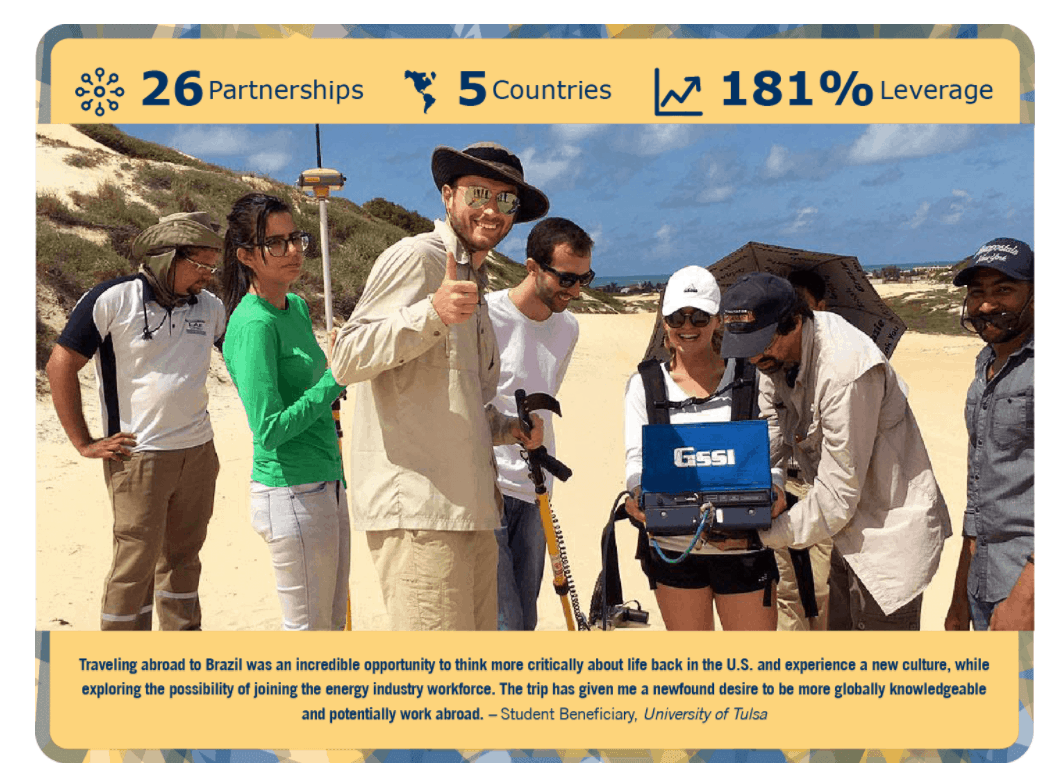
The State Department also funds EducationUSA, which promotes the US as a study destination through advertising and events in over 170 countries, and provides resources and support for US institutions of all kinds, including universities, language schools, and community colleges.
Example: US schools can sign up to participate in various recruitment fairs, conferences, and other events through the EducationUSA website.
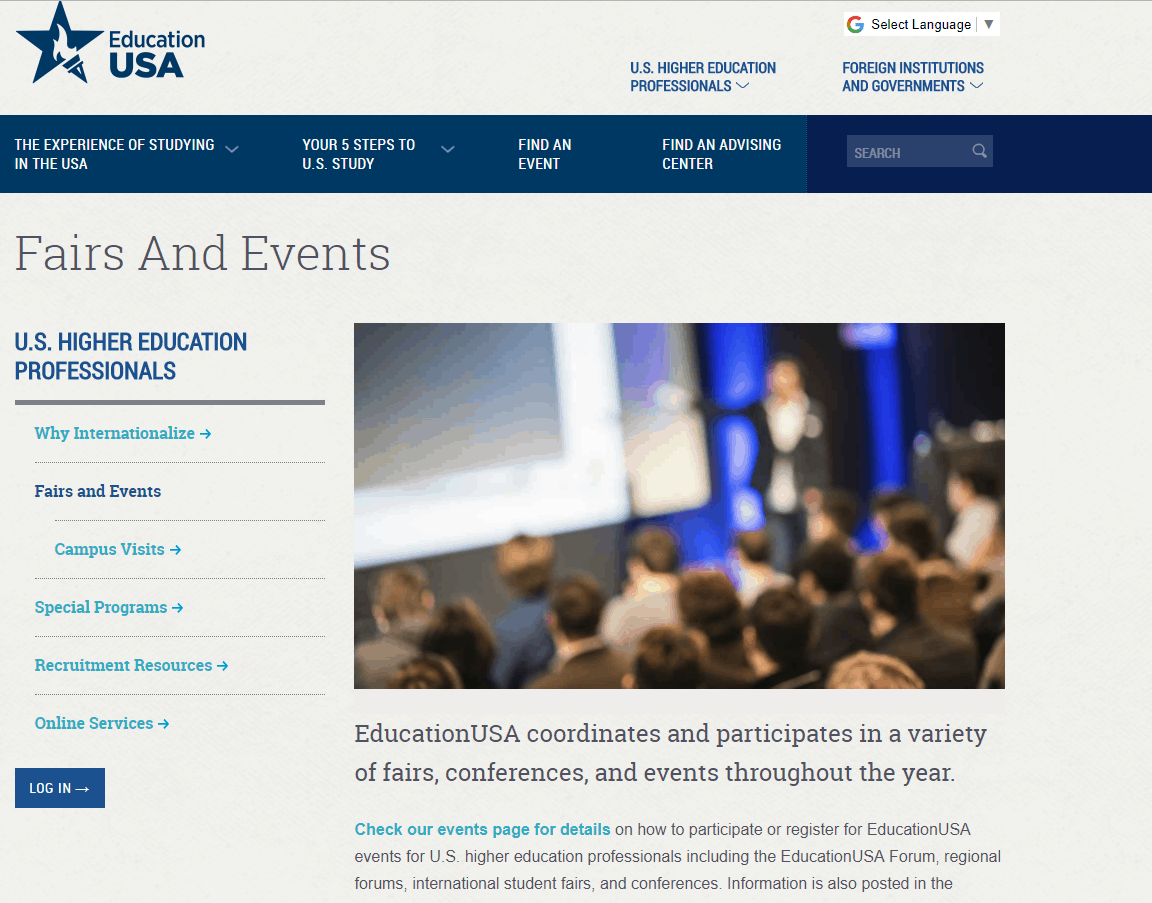
Despite these efforts, many experts feel the country could benefit from a more centralized, cohesive national strategy. Paul Schulmann of World Education Services noted in a 2016 article that “a more coordinated effort, guided by a comprehensive vision for international higher education could help us realize the full benefits of international students.”
One country held up by Schulmann as an example was Australia, a nation whose approach to the international student recruitment sector has long been admired by others. Launched in 2016, the Australian government’s National Strategy for International Education 2025 is an ambitious 10-year strategy focused on improving the country’s education and research infrastructure, building strategic international partnerships, and promoting it as a leading study destination, with over USD$8.8 million in funding allocated in the initial four years of the plan.
Canada launched a similar International Education Strategy in 2014, with the express aim of doubling the number of international students in the country by 2022. The plan went somewhat further than its Australian equivalent in that it set forth six key markets – Brazil, India, China, Vietnam, Mexico and North Africa /the Middle East, including Turkey– in which the country aims to foster growth.
These overarching strategies have served as models for emerging destination markets to follow, too. Malaysia, for instance, launched The Malaysia Education Blueprint 2015-2025 (Higher Education) in 2015. In tandem with modernizing and improving the standard of higher education in the country, the strategy also aims to increase the number of international students enrolled in Malaysian institutions to 250,000 within ten years.
Another noteworthy recent example is Ireland. With the prospect of becoming the only English-speaking nation in the EU in the aftermath of Brexit, the country’s government has sought to seize the opportunity to further expand its growing share of the international student market. Irish Education Globally Connected: An International Education Strategy for Ireland, 2016-2020 aims to increase the number of international students in the country’s higher education institutions by 33%, and the number of students in ELT programmes by 25%, with the overall aim to boost the sector’s contribution to the economy to USD$2.34 billion. Funding is expected to be concentrated on marketing campaigns in China, the USA, India, Malaysia, Brazil, and the Persian Gulf.
The Irish government has also taken a number of other steps to become a more attractive study destination in support of the strategy. These include establishing a new fund for international university partnerships, announcing plans for new purpose-built student housing, and extending the period in which postgraduate students can remain in the country to seek work after graduation to 24 months. These new initiatives can serve as valuable advantages for Irish schools to highlight to prospective international applicants.
Example: This blog created by Dublin International Foundation College capitalized on the announcement that Ireland had extended its stayback option for graduate students, presenting it as a unique selling point for prospective students considering studying in the country.
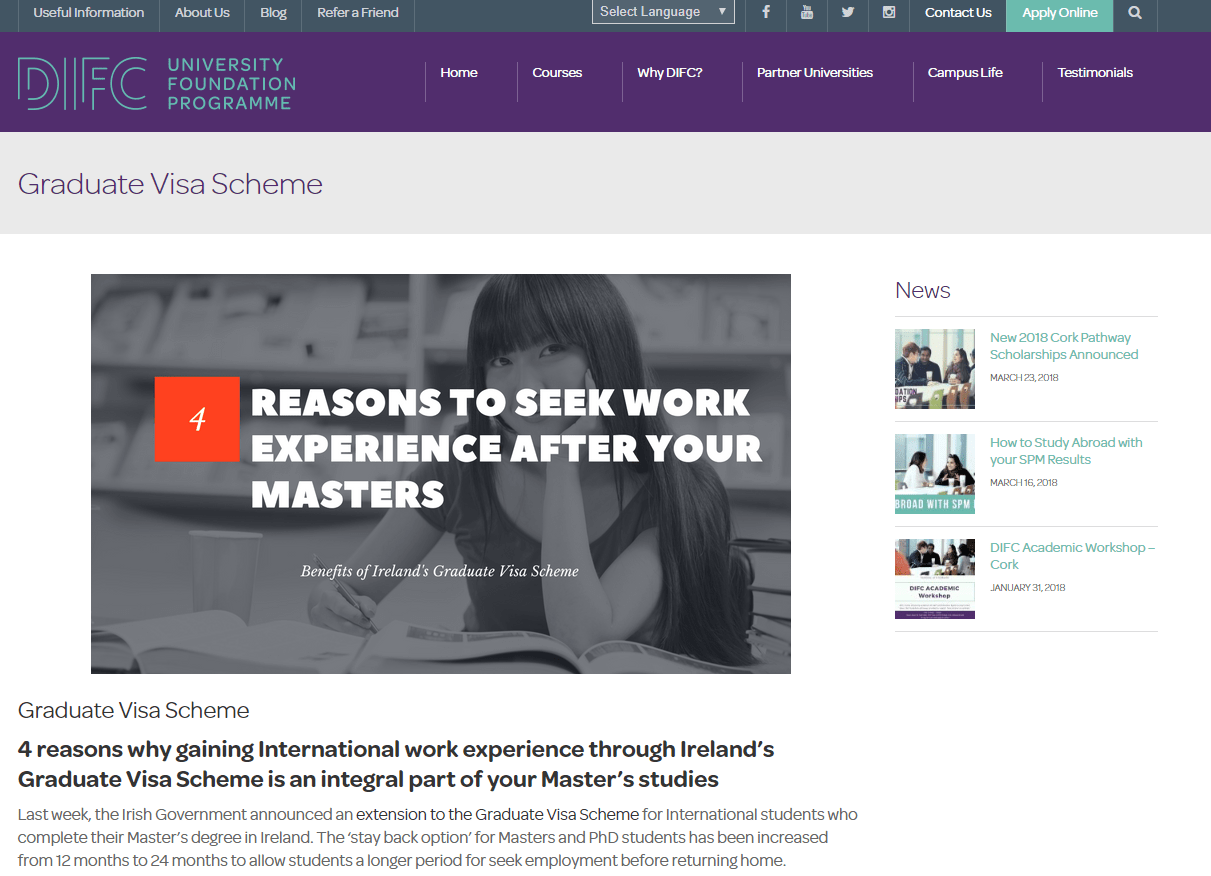
Other notable examples include the UK’s International education strategy: global growth and prosperity, the German government’s Internationalization Strategy, and the International Education Strategy for New Zealand, among others. For institutions in these countries, or others offering similar initiatives, the potential possibilities to capitalize on the new resources available, partnership and scholarship funding opportunities, and increased visibility of their country as a study destination in key markets is huge.
What are DMOs and What Role do They Play in International Student Recruitment?
A crucial part of these state-sponsored international student recruitment efforts is large scale marketing campaigns, both online and through traditional media. Usually, these campaigns are run by Destination Marketing Organizations (DMOs), which are state-sponsored bodies tasked with the express goal of promoting a country, region, or city as a study destination. Australia, for example, has an extensive network of DMOs which promote education in different parts of the country.
While DMOs tend to focus more on broadly promoting a location as a study destination rather than pushing particular institutions, there are still steps you can take to ensure your school maximizes the possible benefits from any DMO-led campaigns in your locale. For example, DMOs are often keen to solicit student testimonials that can be shared through their websites and other digital channels, so encouraging your current international students to speak to them about their experiences could help garner your school some great publicity.
Example: Study Sydney is a government-run DMO in New South Wales, and regularly features student stories on its website. Below is an interview with an Egyptian student at the University of New South Wales.

DMO websites tend to rank highly in general searches due to their government domains and broad focus, so having your school mentioned frequently on a site like this can be a great way to put it top of mind among prospective students who are in the early stages of the enrollment journey.
DMOs can also run extensive social media campaigns, often encouraging the use of specific hashtags to spread their message. Incorporating these hashtags into your own social media strategies can therefore have a mutually beneficial effect, amplifying both your school’s visibility and awareness of the DMO’s campaign.
Example: Study Queensland encourages students and schools to use the #StudyQueensland hashtag in social media posts.
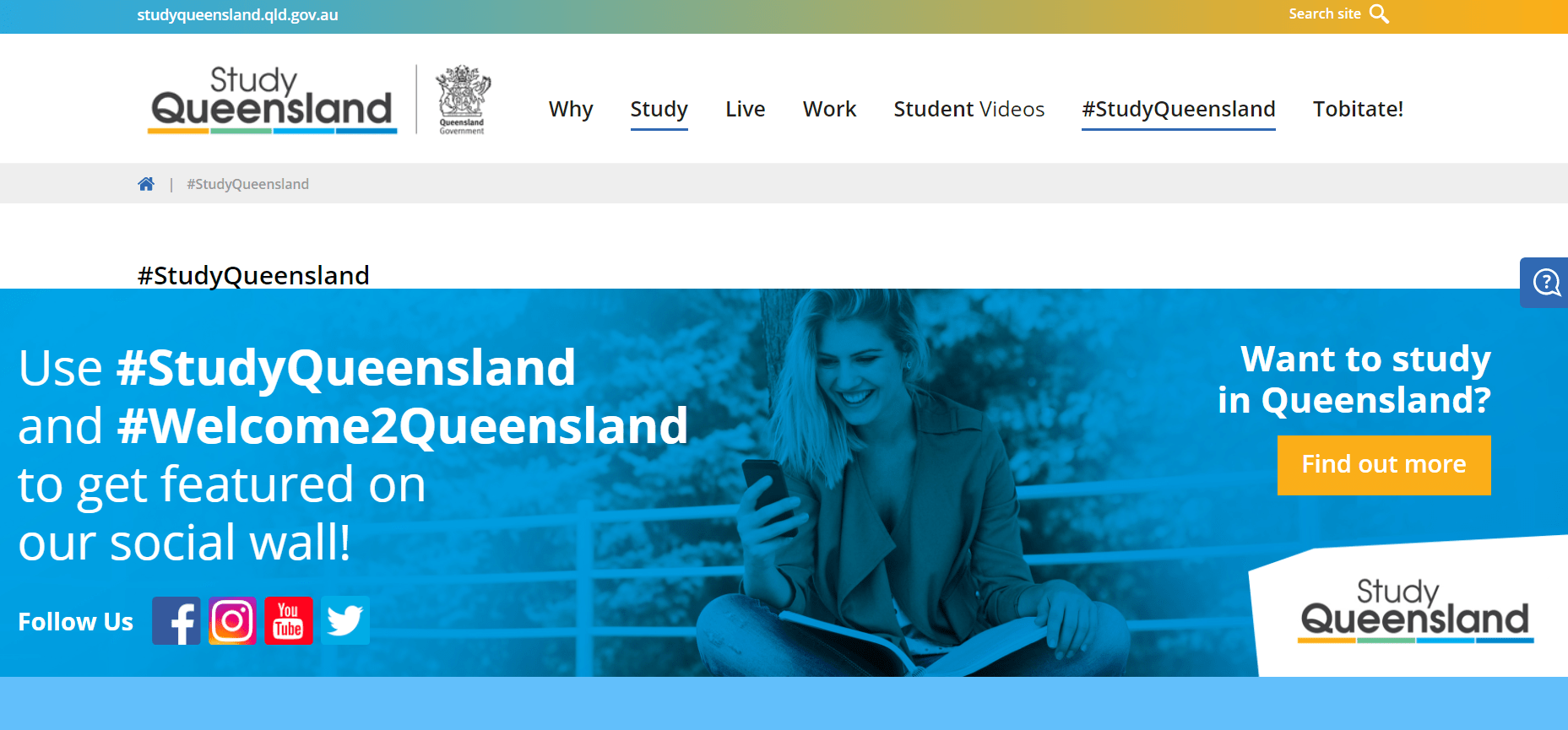
Below, you can see that this Instagram post from the University of Queensland Business School has included the same hashtag, potentially enhancing its reach.
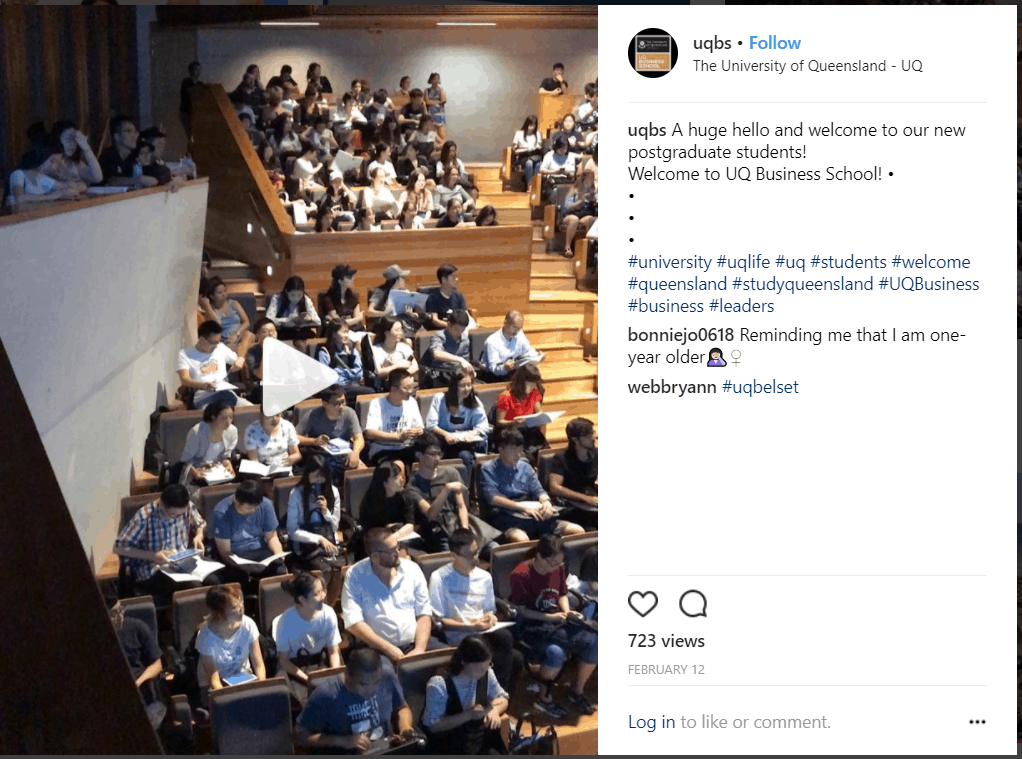
In addition, supporting the efforts of DMOs in your region by promoting their campaigns, events, and resources on your social channels can be a great way to synergize your marketing efforts with theirs, while also providing both your current and prospective international students with useful information and support.
Example: Monash University International Student Service shares an International Student Welcome Party event being run by DMO Study Melbourne on Facebook. Posts like these are not only great for creating engagement, but provide students with valuable information about what is available to them in your region.
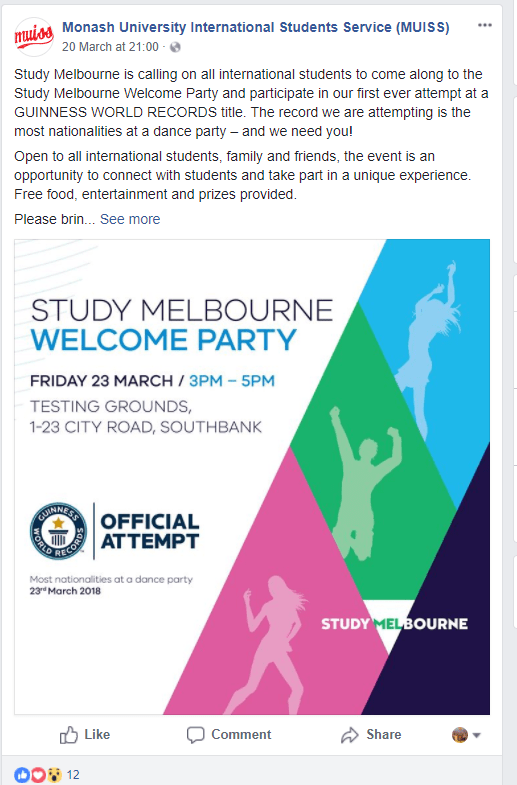
Many DMOs also provide directories of institutions on their website. Since these sites may often be the first port of call for a student looking at study options in a particular country or region, it’s important to ensure that your school is listed, especially if you are a smaller institution who might be in danger of being overlooked by the site’s creators.
Example: The Study in New Zealand website lists just 33 results for English language schools (it’s fair to say that there are many more in the country). Not featuring in this directory could be a costly missed opportunity for ESL education providers.
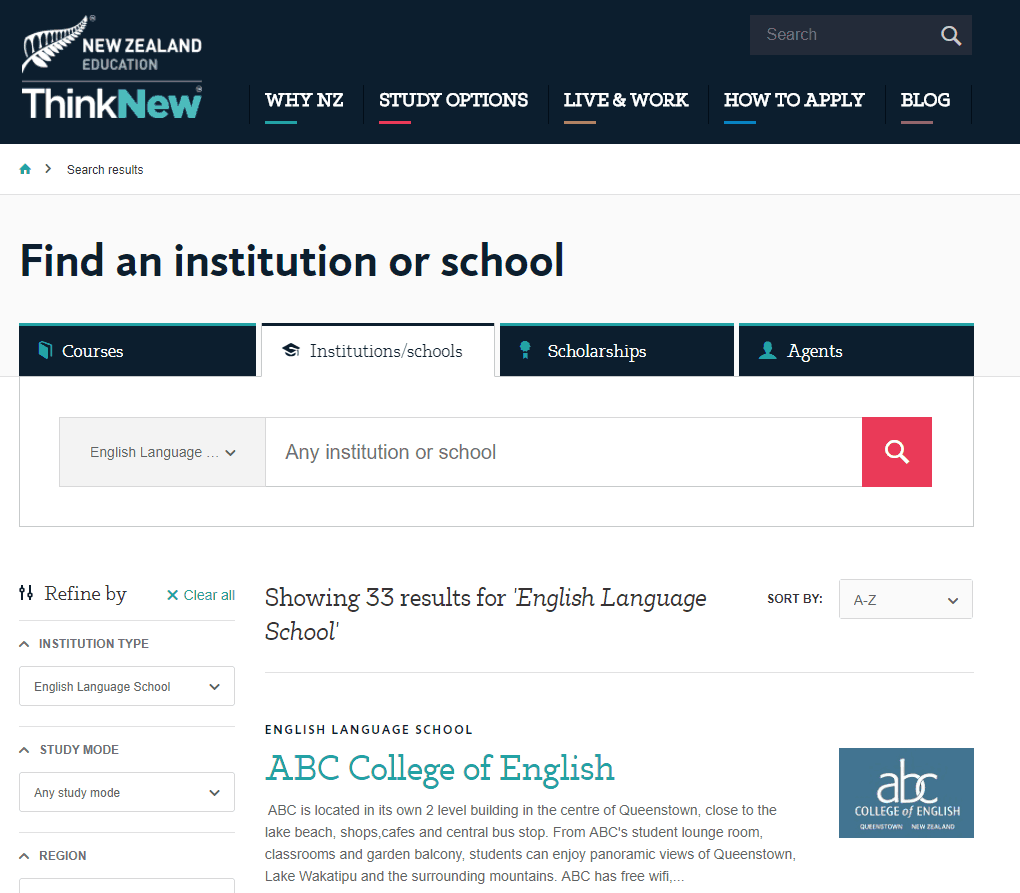
In addition to countries and regions, it is also common for DMOs to be created with the specific aim of recruiting international students in specific subject areas. Association with these organizations and their campaigns can offer even greater opportunity for schools with a specific niche or focus, helping you tap into a market where your location might offer strategic advantages.
Example: Picktourism.ie was created by Fáilte Ireland, the Irish tourism authority, with the express aim of promoting tourism and hospitality courses. The site features a number of promotional videos for specific schools offering tourism programs, like Cork Institute of Technology.

How Your School Can Benefit from Government Strategies for Recruiting International Students
Government education strategies will naturally vary considerably in their aims, components, and implementation depending on where you are located, so the first step for any school looking to benefit from these initiatives is to evaluate what is on offer in their region.
You could contact the government bodies or DMOs involved to find out just what might be available for your school, though many organizations will provide information for institutions on their website.
Example: The Advice page on the Education New Zealand website provides institutions with a slew of useful business development resources.

On this point, it’s important not to fall into the trap of assuming that regional and national student recruitment strategies are only designed to benefit state-run schools, universities, or other high profile institutions. Many recognize the value of smaller or private education providers, and you may even find that your country has a specific strategy for your sector. Ireland’s plan, for instance, places particular importance on ESL education, and could play a key role in increasing the country’s share in the market.
Ensuring your school and programs are present in any DMO directories, promoting and sharing any initiatives or campaign materials which may be relevant to your target market, and keeping an eye out for any opportunities to showcase your school through student testimonials, news, or other content can all be ways to use government efforts to enhance and elevate your presence. Any scholarships, housing initiatives, or efforts to introduce more favourable visa legislation can also be great things to highlight in your marketing efforts.
On a broader level, simply being aware of these initiatives can help you better formulate your international student recruitment strategies. For example, Canada’s national strategy identifies specific key target markets, and the government will be devoting plenty of resources to promoting the country as a study destination in those markets over the coming years. Therefore, a Canadian school which chooses to target the same markets with strategic multilingual content creation, online advertising, and social media marketing campaigns could potentially stand to benefit from the increased awareness and visibility their country will enjoy.
Example: York University in Toronto provides information on its website in both English and Portuguese for future students from Brazil, one of the key markets targeted for growth in Canada’s national strategy.

Of course, government priorities will always change, and initiatives like these are always in danger of losing funding or being re-evaluated. What is clear, however, is that governments around the world now recognize both the economic and cultural benefits of international student mobility, and are prepared to take an active role in promoting it. For schools of all types, that can only be a good thing.







